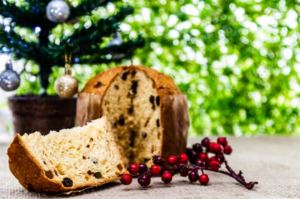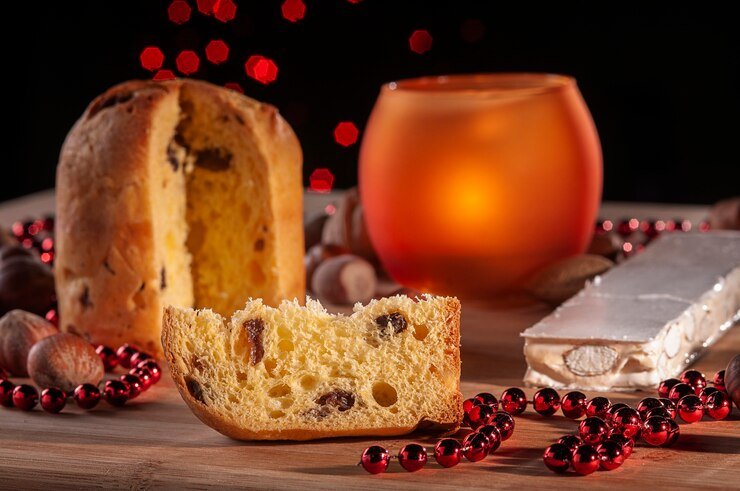
Dietary Considerations for Cranberry Nut Bread
Health Benefits
Nutritional Advantages of Consuming Cranberry Nut Bread
Cranberry nut bread not only offers delightful flavors but also provides several nutritional benefits. Its ingredients contribute to a balanced diet when consumed in moderation:
- Fiber: Both cranberries and nuts contribute dietary fiber, which aids in digestion and helps maintain a healthy gut. Fiber also promotes a feeling of fullness, which can help in weight management.
- Healthy Fats: Nuts are a good source of monounsaturated and polyunsaturated fats, which are essential for heart health and can help lower bad cholesterol levels.
- Antioxidants: Cranberries are rich in antioxidants, which help in fighting free radicals, reducing oxidative stress, and potentially lowering the risk of chronic diseases.
Potential Health Risks
Considerations for Individuals with Specific Dietary Restrictions
While cranberry nut bread can be a healthy addition to many diets, certain individuals should consider the following:
- Carbohydrate Content: For those managing diabetes or adhering to low-carbohydrate diets, the high sugar and carbohydrate content could be a concern. Opting for recipes with reduced sugar or alternative sweeteners may be beneficial.
- Caloric Density: Due to its high calorie content from nuts and added sugars, portion control is crucial for those monitoring their calorie intake for weight management.
Allergen Information
Cranberry nut bread may not be suitable for everyone due to potential allergens:
- Nuts: As a key ingredient, nuts are common allergens that can trigger reactions in susceptible individuals. Those with nut allergies should avoid this bread or seek nut-free variants.
- Gluten: Traditional recipes include wheat flour, which contains gluten. Those with celiac disease or gluten sensitivity should look for gluten-free versions that use alternative flours.
- Eggs and Dairy: Some recipes may include eggs and dairy, which are also common allergens. Vegan or egg-free versions might be necessary for those with allergies or lactose intolerance.
Incorporating cranberry nut bread into a diet requires consideration of its ingredients and how they align with individual health needs and restrictions. Understanding these aspects ensures that all potential health benefits can be enjoyed without compromising dietary health.
Preparation and Variations of Cranberry Nut Bread
Common Ingredients
Overview of Ingredients Used in Cranberry Nut Bread
The classic cranberry nut bread includes a blend of flavorful and nutritious components:
- Flour: Typically, all-purpose flour serves as the base for the bread, providing structure.
- Sugar: White sugar or brown sugar adds sweetness and affects the texture of the bread.
- Eggs: Eggs are used to bind the ingredients together and add moisture.
- Butter or Oil: These fats contribute to the bread’s moistness and flavor.
- Cranberries: Fresh, dried, or frozen cranberries offer a tart contrast to the sweetness of the bread.
- Nuts: Commonly used nuts include walnuts or pecans, which introduce a crunchy texture and rich flavor.
- Leavening Agents: Baking powder or baking soda helps the bread rise.
- Milk or Orange Juice: These liquids are used to adjust the batter consistency and can add a subtle flavor nuance.
Recipe Variations
Low-Calorie Versions
For those looking to reduce the calorie count in their cranberry nut bread, several substitutions can be made:
- Sweeteners: Use natural sweeteners like honey or maple syrup instead of sugar, or opt for sugar substitutes to lower the caloric content.
- Applesauce: Replacing oil or butter with applesauce can significantly cut fat content while still maintaining moisture.
- Egg Whites: Using egg whites instead of whole eggs reduces the amount of fat and cholesterol.
Gluten-Free and Vegan Alternatives
Cranberry nut bread can be easily modified to accommodate dietary restrictions like gluten intolerance and vegan preferences:
- Gluten-Free Flour: A mix of gluten-free flours such as almond flour, oat flour, or a pre-prepared gluten-free blend can replace traditional wheat flour.
- Vegan Substitutes: For a vegan version, plant-based milks (like almond or soy milk), vegan butter, and flaxseed or chia eggs (made from flax or chia seeds mixed with water) can substitute for dairy milk, butter, and eggs.
- Nut-Free Options: For those allergic to nuts, seeds such as pumpkin or sunflower can be used as an alternative, providing similar textural benefits without the allergen risk.
These variations not only make cranberry nut bread more accessible to those with specific dietary needs but also offer an opportunity to experiment with different flavors and textures, making this classic treat enjoyable for a wider audience.
- Healthline – Cranberries 101: Nutrition Facts and Health Benefits
- Embed link in « Essential Vitamins Present » under the Vitamins and Minerals section to provide readers with detailed information on the nutritional benefits of cranberries.
- URL: Cranberries 101: Nutrition Facts and Health Benefits
- WebMD – Health Benefits of Cranberries
- Embed link in « nutritional advantages of consuming cranberry nut bread » under the Health Benefits section to support claims about the health benefits of cranberries.
- URL: Health Benefits of Cranberries
- Medical News Today – Cranberries: Benefits, nutrition, and risks
- Embed link in « Cranberries are a good source » within any section discussing the nutritional content of cranberries, to offer readers more detailed insights into their health benefits and any potential risks.
- URL: Cranberries: Benefits, nutrition, and risks



1 réflexion au sujet de « How many calories are in cranberry nut bread »